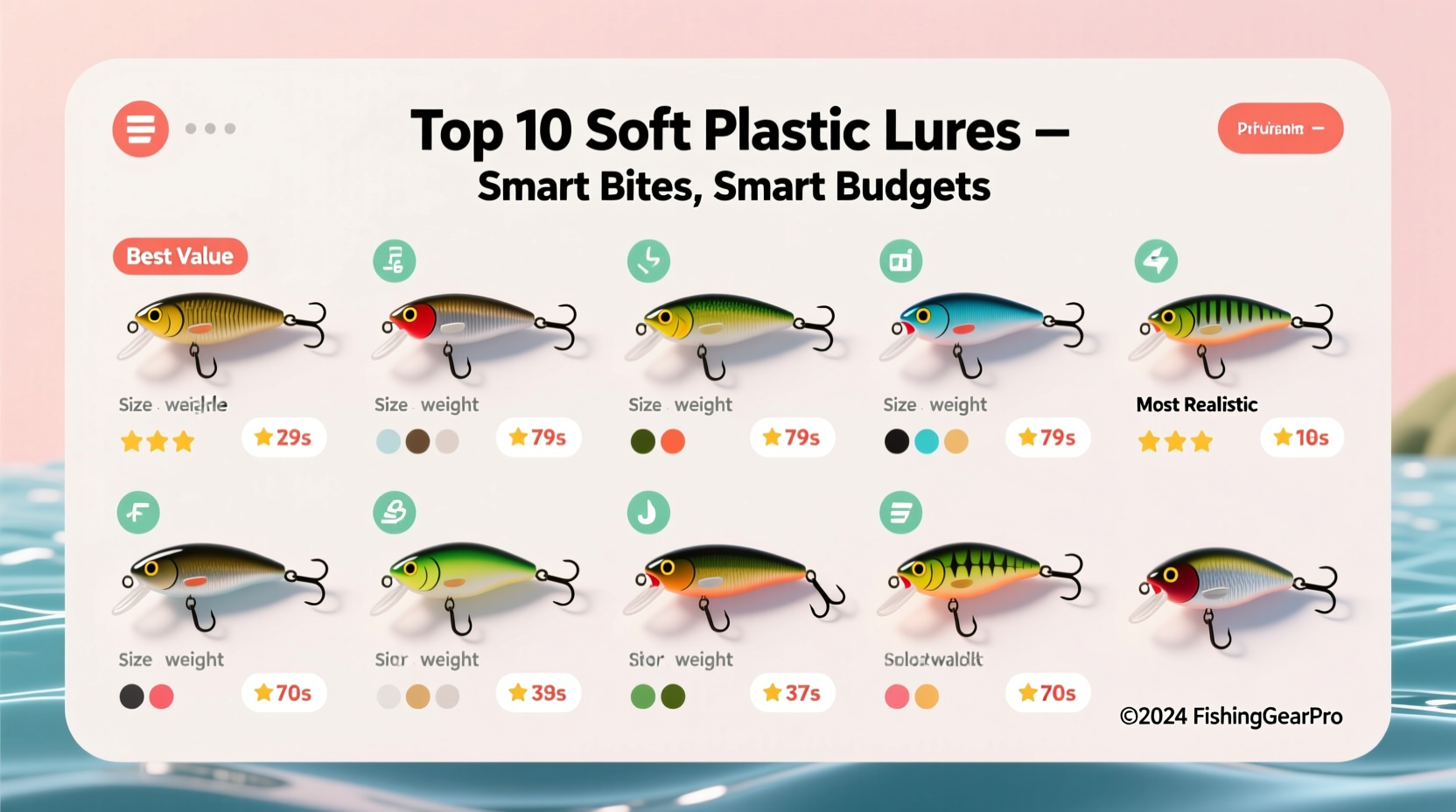In a world where durability meets affordability, soft plastics have quietly become indispensable in daily life. From kitchen essentials to outdoor gear and personal accessories, soft plastic products offer flexibility, resilience, and cost-efficiency. But not all soft plastics are created equal. Some degrade quickly, leach chemicals, or fail under regular use. The key is identifying high-performing options that balance reliability with budget consciousness.
This guide focuses on ten standout soft plastic items that deliver long-term value without straining your wallet. These picks are tested for longevity, safety, and real-world usability—perfect for consumers who want smart, sustainable solutions without overpaying.
What Makes a Soft Plastic \"Wallet-Wise\"?

Before diving into the list, it’s important to define what “wallet-wise” means in this context. It doesn’t just mean cheap—it means high value per dollar spent. A wallet-wise product lasts longer than expected, performs consistently, and avoids hidden costs like frequent replacements or health risks.
Key factors considered:
- Durability: Resistance to cracking, tearing, and UV degradation.
- Safety: Free from harmful phthalates, BPA, and heavy metals.
- Multifunctionality: Adaptable across different uses or environments.
- Price-to-performance ratio: Affordable upfront with minimal long-term costs.
The Top 10 Soft Plastic Picks
| Product | Material Type | Key Benefit | Avg. Price |
|---|---|---|---|
| Foldable Silicone Water Bottle | Food-Grade Silicone | Compact, leakproof, dishwasher-safe | $12–$18 |
| Reusable Silicone Food Storage Bags | Platinum-Cure Silicone | Freezer, microwave, and boil-safe | $8–$15 (set) |
| Soft-Touch Phone Case (TPU) | Thermoplastic Polyurethane | Shock-absorbent, scratch-resistant | $10–$20 |
| Collapsible Travel Sink Stopper | Flexible PVC-Free Rubber | Universal fit, compact design | $6–$9 |
| Non-Slip Dish Drying Mat | TPE with Microfiber Layer | Drains quickly, mildew-resistant | $13–$17 |
| Insulated Lunch Cooler Tote | Recycled PE + Soft Liner | Holds temperature 4+ hours | $20–$28 |
| Adjustable Cable Organizers | Soft PVC Alternative (SEBS) | Stretchable, reusable, tangle-free | $5–$8 (pack of 5) |
| Shower Caddy with Suction Hooks | Flexible EVA Foam | Stays put, resists mold | $15–$22 |
| Kitchen Utensil Set (Silicone Head) | Bamboo Handle + Silicone Tips | Heat-resistant up to 600°F | $18–$25 |
| Car Vent Phone Mount (Gel Pad) | Non-Sticky Gel Polymer | Secure grip, residue-free removal | $14–$19 |
Why These Materials Stand Out
Silicone and TPU dominate this list for good reason. Unlike traditional soft PVC, which often contains phthalates and degrades faster, these modern alternatives maintain elasticity and structural integrity over time. Platinum-cure silicone, in particular, is used in medical devices and baby products due to its purity and stability.
“Switching to high-quality soft plastics isn’t just about convenience—it’s a long-term investment in safety and sustainability.” — Dr. Lena Torres, Materials Scientist at GreenTech Labs
Real-World Example: Sarah’s Zero-Waste Kitchen Upgrade
Sarah, a teacher from Portland, wanted to reduce single-use plastic in her home. She replaced Ziploc bags with silicone storage pouches, swapped dish sponges for a non-slip drying mat, and started using a foldable water bottle for her commute. Within six months, she cut her household plastic waste by nearly 40%. More importantly, none of the soft plastic items showed signs of wear.
“I was skeptical at first,” she said. “But after a year, my silicone bags still seal tightly, and the phone case hasn’t yellowed. I actually saved money because I’m not constantly repurchasing things.”
How to Maximize Longevity of Soft Plastic Products
Even the best materials degrade prematurely without proper care. Follow this simple maintenance routine to extend the life of your soft plastic purchases:
- Wash regularly with mild soap: Avoid abrasive cleaners or steel wool, which can scratch surfaces and harbor bacteria.
- Air dry completely: Trapped moisture leads to mold, especially in crevices or layered materials.
- Store away from direct sunlight: UV rays break down polymer chains, causing brittleness and discoloration.
- Don’t exceed heat limits: Even heat-resistant silicone can warp if left on a stovetop burner.
- Inspect for wear monthly: Replace items with deep cracks or sticky residues, which may indicate chemical breakdown.
Checklist: Smart Buying Guide for Soft Plastics
Before purchasing any soft plastic item, run through this checklist:
- ✅ Is the material clearly labeled (e.g., food-grade silicone, TPU)?
- ✅ Does it have third-party certifications (e.g., FDA-approved, LFGB)?
- ✅ Is it free from strong chemical odors upon opening?
- ✅ Can it be cleaned easily (dishwasher, hand wash, wipeable)?
- ✅ Does the brand offer a warranty or satisfaction guarantee?
- ✅ Is it made in a country with strict manufacturing regulations (e.g., EU, USA, Japan)?
Frequently Asked Questions
Are soft plastic products safe for children?
Yes—when made from certified materials like food-grade silicone or BPA-free TPU. Always check for compliance with ASTM F963 (U.S. toy safety standard) or EN71 (European equivalent). Avoid products with unknown origins or strong smells.
Can silicone items go in the dishwasher?
Most high-quality silicone products are dishwasher-safe, but placement matters. Put them on the top rack, away from heating elements. Lower-quality versions may warp or absorb odors from other dishes.
Do soft plastic phone cases yellow over time?
They can, especially if exposed to UV light, oils from skin, or cigarette smoke. TPU cases are more prone to yellowing than silicone. To prevent this, clean weekly with alcohol wipes and avoid leaving phones in hot cars.
Final Thoughts: Spend Less, Keep More
The best soft plastic picks aren’t the flashiest or cheapest—they’re the ones that quietly serve you day after day. Whether it’s a lunch tote that survives school commutes or a phone mount that holds firm on bumpy roads, these items prove that thoughtful design and quality materials pay off.
By choosing durable, non-toxic soft plastics, you reduce clutter, save money, and minimize environmental impact. It’s not about buying more; it’s about buying right.









 浙公网安备
33010002000092号
浙公网安备
33010002000092号 浙B2-20120091-4
浙B2-20120091-4
Comments
No comments yet. Why don't you start the discussion?